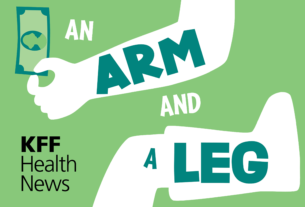[ad_1]
For over three weeks, Mati Shahori, the chief radiologist at Shamir Medical Center, has been confronted with the horrors of Hamas’s October 7 massacre. The images he views on the CT scan machines at Israel’s National Center of Forensic Medicine in Abu Kabir haunt him even after he leaves work.
In his 25 years of experience, he has never witnessed such grisly scenes. Typically, bodies arrive intact for forensic specialists to analyze, with the goal of understanding the cause of death. But this time, the bodies are mutilated, burnt, decayed, or reduced to fragments. Shahori and his team, along with other medical professionals, work tirelessly to identify the hundreds of victims and provide closure for grieving families.
The bodies are transported to the institute in refrigerated trucks, carefully wrapped in sealed black bags. The first step in the identification process is a CT scan, followed by comparing X-rays of teeth and sinuses for unique characteristics. Other methods include DNA testing; analysis of old fractures or surgeries; examination of implants and pacemakers; and examination of fingerprints, scars, and tattoos. Unfortunately, many bodies from the massacre sent to Abu Kabir are in such poor condition that these methods prove insufficient. Shahori explained how he once scanned a bag containing two charred heads and individual bones. The remains had to be carefully examined in order to identify them.
Hundreds of bodies from the massacre have also arrived at the Shura military base near Ramle. Igor Shlein, a member of Shahori’s team, described the shocking state of the bodies that continue to flood in. Despite his 15 years of experience, nothing has prepared him for this magnitude of death and destruction.
The influx of bodies shows no signs of stopping. According to Dr. Alon Crispin, a forensic physician and director of Shamir’s imaging department, 70 bodies arrived last Wednesday, followed by another 27 the next day. The bodies are mainly sent from the Shura base, where identification has proven difficult. Crispin explained that he and the other radiologists employ various advanced identification methods, including DNA extraction from individual bones.
Even bodies suspected to be terrorists undergo CT scans to ensure they are not mistakenly identified as Israelis.
The toll of this work takes a toll on the medical professionals. Shlein admitted to disassociating from the gruesome sights, but acknowledged the undeniable trauma they are all experiencing.
The staff relies on each other for support but look forward to the professional mental healthcare assistance that the hospital promised.
“The assumption is that the bodies that reached us in the last week are mostly those of Hamas terrorists, and possibly also of Bedouin Israelis or foreign workers whose absence was not reported,” says Crispin. “When bodies arrive to us in bad condition, and we don’t have much in the way of medical information, it’s not easy to identify if the body belongs to a terrorist. We have to check that we didn’t miss it.”
How do you stand it?
“I work on autopilot, I try not to think about what I see,” Shlein said. “I believe that we will all need mental healthcare assistance to recover. There is no doubt that we are traumatized.”
One night, Shahori woke up from a nightmare drenched in sweat.
“I dreamed that terrorists came to our house and massacred us,” he recalled. “In the morning, I came to work and felt that I had no more strength, that my soul was bruised and wounded.”
Do you receive professional mental healthcare support?
“We talk to each other. But we work in shifts and don’t meet that much. Last week, we were promised that we would receive professional mental healthcare support from the hospital staff so that we wouldn’t have to deal with it alone.”
The CT scans are interpreted by the radiologists. According to Shamir imaging department head Prof. Sigal Tal, “We have been helping identify victims since the first day of the war. I have been a specialist radiologist for more than 25 years, and I have never encountered such horrifying sights… We sat for days on end deciphering scans of the bodies, we were looking for X-ray identification that we could compare with tests carried out on the spaces in their lives. This is a Sisyphean labor.”
Shamir Medical Center has been working for years in cooperation with Abu Kabir. “We provide backup and assistance to radiologists in Abu Kabir on a weekly basis, mainly in determining causes of death. But of course, not with such intensity and magnitudes,” Tal said.
“In addition, we made sure to connect the institute to our advanced computer systems, for the purpose of cross-checking the CT scan data with thousands of medical records handed over by the families of those who went missing on October 7, which helps to identify the victims of the massacre. We see how terrible the uncertainty is for the families, and are doing everything we can, together with the other professionals who deal in the sacred mission of identifying the victims, so that families can know what happened to their loved ones.”
The Jerusalem Post and OneFamily are working together to help support the victims of the Hamas massacre and the soldiers of Israel who have been drafted to ensure that it never happens again.
Become a partner in this project by donating to OneFamily>>
[ad_2]
Source link


